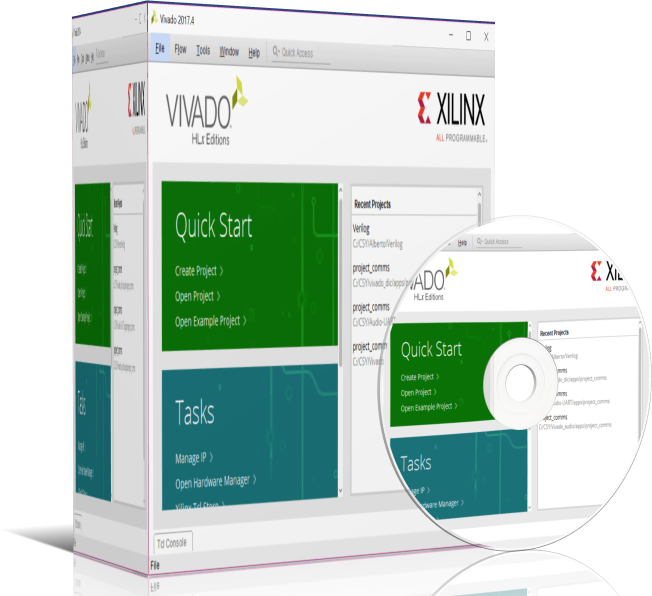Vivado software free download with crack
Vivado software free download with crack Suite by Xilinx is a comprehensive software tool for designing and programming FPGA-based systems.
Overview of Vivado Design Suite
It is widely used by engineers and developers for its robust features and user-friendly interface. The software provides a complete suite of tools for synthesis, simulation, and implementation of digital designs. With Vivado, users can efficiently manage their projects, optimize performance, and ensure the reliability of their designs. The software supports a wide range of FPGA devices, making it a versatile choice for various applications.
One of the standout features of Vivado is its advanced synthesis capabilities. The software uses a high-level synthesis approach, allowing users to describe their designs in C, C++, or SystemC. This makes it easier to develop complex algorithms and accelerates the design process. Additionally, Vivado includes a powerful simulation engine that enables users to verify their designs before implementation. This helps in identifying and fixing issues early in the design cycle, saving time and resources.

Vivado also offers a range of optimization tools that help in improving the performance and efficiency of FPGA designs. The software includes features such as timing analysis, power optimization, and resource utilization analysis. These tools provide valuable insights into the design, allowing users to make informed decisions and achieve the desired performance targets. Furthermore, Vivado supports incremental compilation, which speeds up the design iteration process by recompiling only the modified parts of the design.
Another key aspect of Vivado is its integration with other Xilinx tools and platforms. The software seamlessly integrates with the Vitis unified software platform, enabling users to develop both hardware and software components of their designs in a single environment. This integration simplifies the development process and enhances productivity. Additionally, Vivado supports a wide range of third-party tools and IP cores, providing users with the flexibility to choose the best solutions for their projects.
Features of Vivado Design Suite
- Advanced Synthesis: High-level synthesis from C, C++, or SystemC.
- Simulation Engine: Powerful simulation capabilities for design verification.
- Optimization Tools: Timing analysis, power optimization, and resource utilization analysis.
- Incremental Compilation: Speeds up design iterations by recompiling only modified parts.
- Integration: Seamless integration with Vitis and support for third-party tools and IP cores.
Technical Specifications
- Version: 2024.1
- Interface Language: Multiple languages
- Audio Language: Not applicable
- Uploader / Repacker Group: Xilinx
- File Name: Vivado_2024.1.exe
- Download Size: 30.29 GB
System Requirements
- PC: Windows 10, 16 GB RAM, Intel Core i7 or AMD Ryzen 7, 50 GB free disk space
- Mac: Not available
- Linux: Ubuntu 18.04 or later, 16 GB RAM, Intel Core i7 or AMD Ryzen 7, 50 GB free disk space
- Android: Not available
How to Download and Install
- Visit the Xilinx Website:
- Go to the official Xilinx website.
- Navigate to the Vivado Design Suite download page.
- Create an Account:
- If you don’t have a Xilinx account, create one by following the registration process.
- Download the Installer:
- Select the appropriate version for your operating system.
- Click on the download button and save the installer file to your computer.
- Run the Installer:
- Open the downloaded installer file.
- Follow the on-screen instructions to complete the installation process.

How to Use
- Create a New Project:
- Open Vivado and create a new project.
- Select the target FPGA device and configure the project settings.
- Design Entry:
- Use the high-level synthesis tools to describe your design in C, C++, or SystemC.
- Alternatively, use the schematic editor or HDL editor for design entry.
- Simulation:
- Run simulations to verify the functionality of your design.
- Use the simulation tools to identify and fix any issues.
- Synthesis and Implementation:
- Synthesize your design to generate the FPGA configuration.
- Use the implementation tools to optimize the design for performance and resource utilization.
- Programming the FPGA:
- Connect your FPGA device to your computer.
- Use the Vivado programming tools to upload the configuration to the FPGA.
For more information on software and game-related topics, you can visit websites like aacpi.org, flex44d.com, toreef.com, and gulvezir.com.
I hope this helps! If you have any other questions or need further assistance, feel free to ask.


Leave a Reply